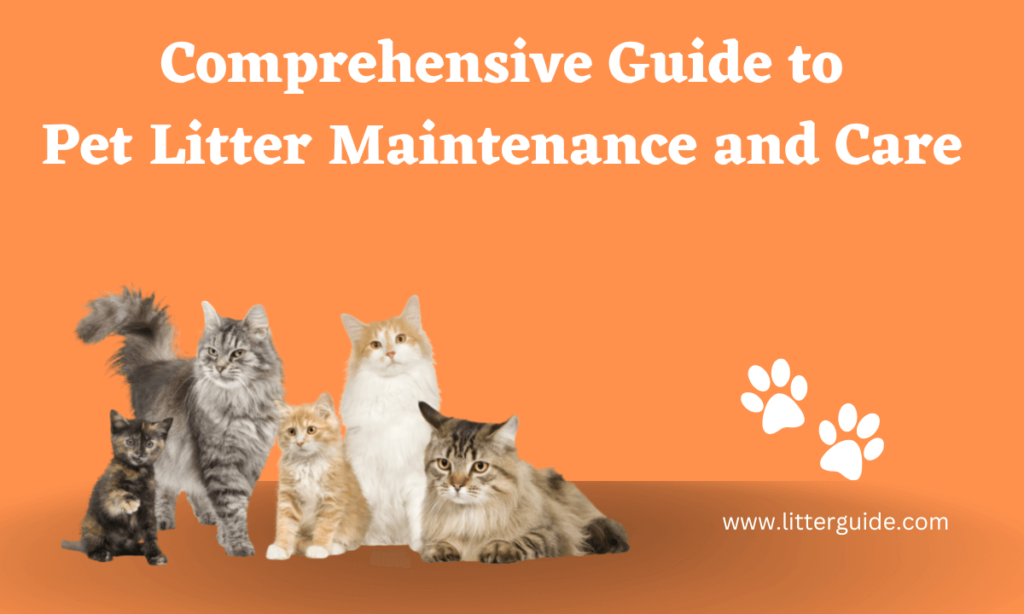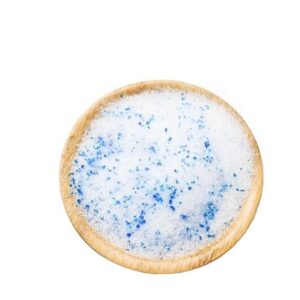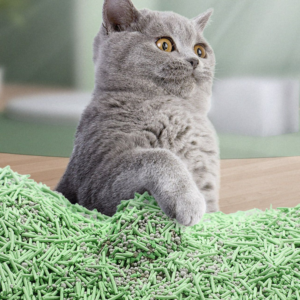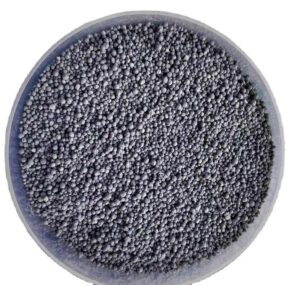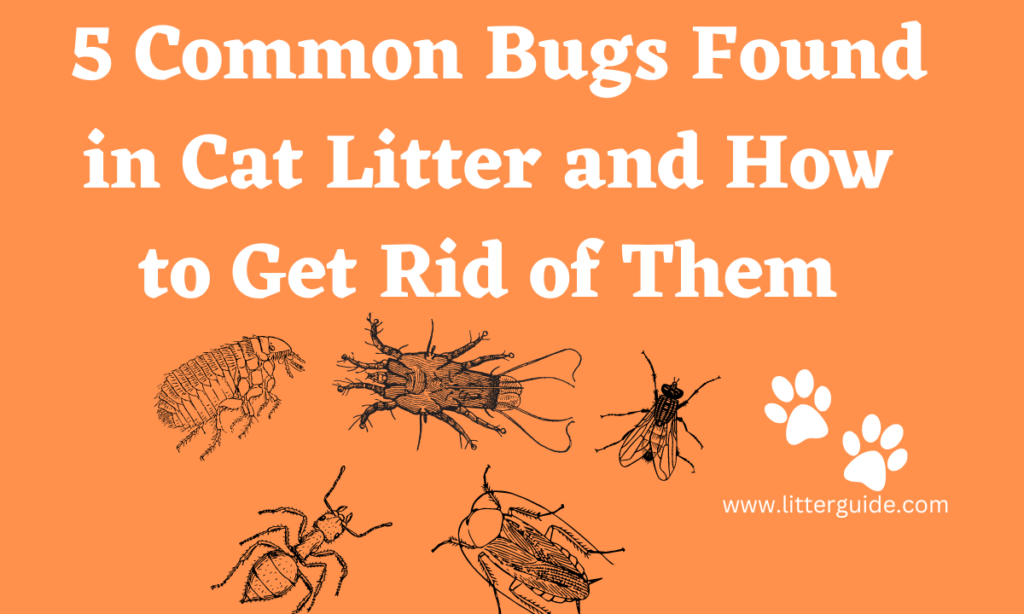Table of Contents
Introduction
Pets are a beloved part of many families, and as pet owners, it’s our responsibility to keep them healthy and happy. One aspect of pet care that often gets overlooked is pet litter. However, choosing the right type of pet litter can have a significant impact on your pet’s health and well-being, as well as the cleanliness of your home.
In this article, we’ll provide you with everything you need to know about pet litter. We’ll cover the different types of litter available, how to choose the right one for your pet, and tips for keeping your litter box clean and fresh. By the end of this guide, you’ll be an expert on all things pet litter!
Types of Pet Litter
When it comes to pet litter, there are several different types to choose from. Here are some of the most common types of pet litter
Clay litter
Clay litter is a popular type of pet litter made from bentonite clay, which is a type of absorbent clay that can swell up to 15 times its original size when it comes into contact with moisture. This type of litter is widely used because it’s affordable, easy to find, and effective at controlling odors.

There are two main types of clay litter: non-clumping and clumping. Non-clumping clay litter is made from small particles of clay that absorb urine and help control odor. However, because it doesn’t form clumps, it can be more challenging to clean and may require more frequent changing.
Clumping clay litter, on the other hand, is made from larger particles of clay that clump together when they come into contact with urine, making it easier to scoop and remove waste. This type of litter is often preferred by pet owners because it’s easier to maintain and requires less frequent changing.
One potential downside of clay litter is that it can be quite dusty, which can be problematic for cats and their owners who have allergies or respiratory issues. Additionally, some clay litters contain added fragrances or other chemicals that may be irritating to some pets or humans.
Overall, clay litter is a popular and effective choice for pet owners looking for a convenient and affordable option for their pets’ litter boxes. However, it’s important to weigh the potential benefits and drawbacks of each type of litter and choose the one that best suits your pet’s needs and your own preferences.
Crystal Or Silica Gel Litter
Crystal litter is a type of pet litter made from silica gel crystals, which are highly absorbent and able to hold a significant amount of moisture. This type of litter is popular among pet owners because it is effective at controlling odors and requires less frequent changing than other types of litter.
Crystal litter is typically made from a type of silica gel that has been processed to remove any impurities and make it safe for pets to use. The crystals are usually transparent and have a slightly irregular shape, which helps them absorb moisture more effectively.
One of the key benefits of crystal litter is its ability to control odors. The silica gel crystals are able to trap and absorb urine and feces odors, helping to keep your home smelling fresh and clean. Additionally, crystal litter is often less dusty than other types of litter, which can be beneficial for pets and their owners who have allergies or respiratory issues.
Crystal litter is available in both scented and unscented varieties, so pet owners can choose the option that best suits their preferences. Some crystal litters may also come in a range of colors, such as blue or pink, which can add a fun and colorful element to your pet’s litter box.
One potential drawback of crystal litter is its cost. Compared to other types of litter, crystal litter is often more expensive, so it may not be the best choice for pet owners on a tight budget. Additionally, crystal litter may not be as effective at clumping as other types of litter, which can make it more challenging to scoop and remove waste.
Overall, crystal litter is a popular choice for pet owners who want a litter that is effective at controlling odors and requires less frequent changing than other types of litter. However, it’s important to consider your own budget and your pet’s needs when choosing the best type of litter for your household.
Natural Litter
Natural litter is a type of pet litter made from natural, biodegradable materials such as wood, paper, corn, wheat, or other plant-based materials. This type of litter is popular among pet owners who want an environmentally friendly option for their pets’ litter boxes.
One of the key benefits of natural litter is its eco-friendliness. Because it’s made from natural materials, it’s biodegradable and doesn’t contribute to the buildup of non-biodegradable waste in landfills. Additionally, some types of natural litter can be composted, making them an even more sustainable option.
Natural litter is available in a variety of forms, including pellets, granules, and clumping or non-clumping varieties. Some types of natural litter are scented with natural fragrances like lavender or eucalyptus, while others are unscented.
One potential drawback of natural litter is that it may not be as effective at controlling odors as other types of litter. Additionally, some types of natural litter may be more expensive than traditional clay litter, and they may require more frequent changing.
Despite these potential drawbacks, natural litter remains a popular option among pet owners who prioritize sustainability and eco-friendliness. When choosing a natural litter, it’s important to consider factors such as cost, effectiveness at controlling odors, and your pet’s preferences and needs.
Clumping Litter
Clumping litter is a type of pet litter that forms clumps when it comes into contact with moisture, making it easier to remove waste from your pet’s litter box. This type of litter is popular among pet owners because it’s convenient, effective at controlling odors, and requires less frequent changing than other types of litter.
Clumping litter is typically made from materials such as clay, corn, wheat, or other plant-based materials that are highly absorbent and able to form clumps. When your pet urinates on clumping litter, the moisture causes the litter to clump together, trapping the urine and making it easier to scoop out of the litter box.
One of the key benefits of clumping litter is its ease of use. Because the litter forms clumps, it’s easier to remove waste from your pet’s litter box, which can save time and effort. Additionally, clumping litter is often more effective at controlling odors than non-clumping litter, which can help keep your home smelling fresh and clean.
Clumping litter is available in a variety of forms, including clay, plant-based, and crystal varieties. Some clumping litters may also be scented with fragrances like lavender or pine, while others are unscented.
One potential drawback of clumping litter is its dustiness. Some types of clumping litter can be quite dusty, which can be problematic for pets and their owners who have allergies or respiratory issues. Additionally, clumping litter may be more expensive than non-clumping litter, although it may require less frequent changing, which can help offset the cost.
Overall, clumping litter is a popular and effective option for pet owners looking for a convenient and easy-to-use litter option. When choosing a clumping litter, it’s important to consider factors such as dustiness, cost, and your pet’s preferences and needs.
Non-Clumping Litter
Non-clumping litter is a type of pet litter that doesn’t form clumps when it comes into contact with moisture, making it easier to remove waste from your pet’s litter box. This type of litter is typically made from materials such as clay, recycled paper, or other plant-based materials.
Non-clumping litter is typically less expensive than clumping litter and may be a good option for pet owners on a budget. Additionally, non-clumping litter may be less dusty than some types of clumping litter, making it a good choice for pets and their owners who have allergies or respiratory issues.
One of the main drawbacks of non-clumping litter is its effectiveness at controlling odors. Unlike clumping litter, non-clumping litter does not form clumps when it comes into contact with moisture, so it may be less effective at trapping odors. As a result, non-clumping litter may require more frequent changing than clumping litter.
Non-clumping litter is available in a variety of forms, including clay, recycled paper, and plant-based varieties. Some non-clumping litters may be scented with fragrances like lavender or pine, while others are unscented.
When choosing a non-clumping litter, it’s important to consider factors such as cost, effectiveness at controlling odors, and your pet’s preferences and needs. Some pets may prefer a certain type of litter, while others may not be as picky. Ultimately, the best choice of litter for your pet will depend on a variety of factors, including your budget, lifestyle, and personal preferences.
Choosing the Right Litter for Your Pet
Now that you know the different types of pet litter available, how do you choose the right one for your pet? Here are some factors to consider:
Your pet’s preferences
Some pets are picky about the type of litter they use. If your pet has a preference, it’s important to take that into account when choosing litter.
Your pet’s health
If your pet has respiratory problems, it’s important to choose a litter that’s dust-free. If your pet has allergies, it’s important to choose a litter that won’t trigger their allergies.
Odor control
odor control is a concern, look for litter that’s specifically designed to control odors.
Cost
Some types of litter are more expensive than others. Consider your budget when choosing litter
Keeping Your Litter Box Clean
Once you’ve chosen the right type of litter for your pet, it’s important to keep the litter box clean. Here are some tips for keeping your litter box clean and fresh:
Scoop the litter box daily:
Scoop the litter box at least once a day to remove waste.
Change the litter regularly:
How often you need to change the litter will depend on the type of litter you’re using and how many pets you have. As a general rule, clay litter should be changed every two to three weeks, while other types of litter may need to be changed more frequently.
Clean the litterbox regularly:
Even if you’re scooping the litter box daily and changing the litter as needed, it’s important to clean the litter box regularly to remove any residual odors or bacteria. Wash the litter box with soap and water, then rinse and dry it thoroughly.
Use a litter box liner:
Using a litter box liner can make cleaning the litter box easier and prevent the litter from sticking to the bottom of the box.
Add baking soda:
Sprinkling a little bit of baking soda on top of the litter can help control odors.
Avoid strong cleaning chemicals:
Avoid using strong cleaning chemicals, such as bleach, to clean the litter box. These chemicals can be harmful to your pet and may leave behind a strong odor.
Conclusion
Pet litter may not be the most glamorous aspect of pet ownership, but it’s an important one. Choosing the right type of litter can have a significant impact on your pet’s health and well-being, as well as the cleanliness of your home. By considering your pet’s preferences, health, odor control needs, and budget, you can choose the right litter for your pet.
Once you’ve chosen the right litter, it’s important to keep the litter box clean and fresh. By scooping the litter box daily, changing the litter regularly, and cleaning the litter box with soap and water, you can ensure that your home stays odor-free and your pet stays healthy and happy.
We hope that this ultimate guide to pet litter has been helpful to you. By following the tips and advice provided in this guide, you can be confident that you’re providing the best possible care for your furry friend.

